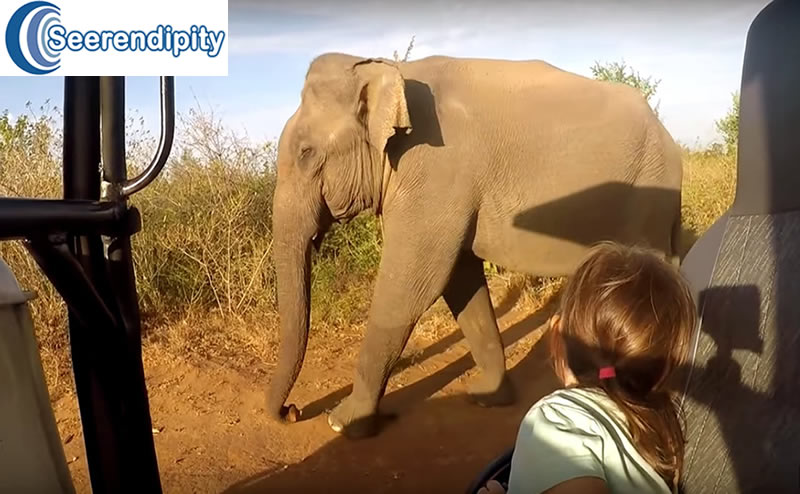
12 Best Places for Sri Lanka Nature Tours
Have one of the Sri Lanka nature tours organized by Seerendiopity tours and enjoy the fascinating Faun and flora of Sri Lanka. Kayaking, boating, canoeing, mountain climbing, rock climbing and rainforest exploration are some of the interesting things that can be done in Sri Lanka. Following are several off beaten the track holiday activities in Neluwa and the surrounding area.
Table of Contents
- Why Choose Sri Lanka for Nature Tours?
- Places for Sri Lanka nature tours
- What are the 12 best places for Sri Lanka nature tours?
- Few other useful links
- Types of Nature Tours
- 1. Sri Lanka nature tours at Sinharaja rainforest
- 2. Sri Lanka nature tours: visiting Yala national park
- 3. Visiting Horton Plains on Sri Lanka nature tours
- 4. Sri Lanka nature tours: visiting Unawatuna beach
- 5. Madu River estuary for Sri Lanka nature tours
- 6. Sri Lanka nature tours: visiting the lush forest in Neluwa
- 7. Sri Lanka nature tours: visiting the Kanneliya rainforest
- 8. Sri Lanka nature tours: visiting Dellawa forest
- 9. Sri Lanka nature tours: visiting Nuwara Eliya
- 10. Sri Lanka nature tours: visiting Nilagala Forest Reserve
- 11. Sri Lanka nature tours: visiting waturana-last remaining swamp forest
- 12. Sri Lanka nature tours: visiting Kottawa forest
- Knuckles
- Minneriya
- Udawalawe
- Wilpattu
Why Choose Sri Lanka for Nature Tours?
- 433 species of birds (33 endemic)
- World’s highest leopard density
- 3,210 flowering plants
- 2 UNESCO Natural World Heritage Sites Source: Sri Lanka Wildlife Conservation
Places for Sri Lanka nature tours
Thinking of choosing Sri Lanka as your next holiday destination but wondering what to do other than just the beach hopping and sea bath? There are many interesting places to visit in Sri Lanka such as historical places, ancient temples, rainforests and national parks. But it is worth trying more remote places towards the interior of the country and seeing the interesting flora and awe-inspiring countryside scenery. For nature lovers, Sri Lanka offers a large number of places to see and they are scattered all over the island.
Have one of the Sri Lanka nature tours organized by Seerendiopity tours and enjoy the fascinating Faun and flora of Sri Lanka. Kayaking, boating, canoeing, mountain climbing, rock climbing and rainforest exploration are some of the interesting things that can be done here. Following are several off beaten the track holiday activities in Neluwa and the surrounding area.
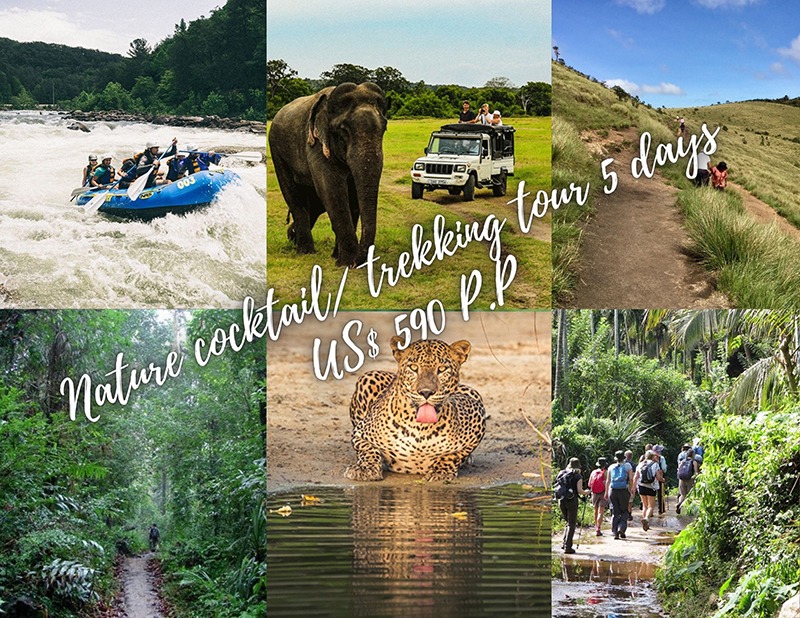
What are the 12 best places for Sri Lanka nature tours?
- Sinharaja rain forest. …
- Yala national park. …
- Horton plains national park. …
- Unawatuna Beach. …
- Madu River estuary. …
- Neluwa. …
- Kanneliya. …
- Dellawa. …
- Nuwara Eliya. …
- Nilagala forest reserve. …
- Waturana wetland forest
- Kottawa forest reserve
Few other useful links
5 best places to visit in Sri Lanka in one day
12 best places to visit in Sri Lanka in 2 days
15 best places to visit in Sri Lanka in 3 days
Places to visit in Sri Lanka in 4 days
22 places to visit in Sri Lanka in 5 days
Types of Nature Tours
Looking to explore Sri Lanka’s incredible biodiversity? The island offers diverse nature tours to suit every adventurer. Join a thrilling wildlife safari in Yala or Wilpattu National Parks, where you might spot elusive leopards and majestic elephants in their natural habitat. For bird enthusiasts, guided tours through Sinharaja Rainforest reveal endemic species like the Sri Lanka Blue Magpie. Rainforest treks offer immersive experiences with expert naturalists who’ll help you identify exotic plants and wildlife. Early morning or evening tours provide the best wildlife viewing opportunities, while photography-focused tours include specialised guidance for capturing perfect shots. Whether you’re a casual nature lover or serious wildlife photographer, there’s a tour perfectly suited to your interests.
Wildlife Safaris
- Half-day tours
- 3-4 hours
- Best for families
- Basic wildlife viewing
- Full-day experiences
- Dawn to dusk
- Multiple locations
- Photography focus
Rainforest Treks
- Guided walks
- Bird watching
- Plant identification
- Photography opportunities
Bird Watching Tours
- Professional guides
- Special photography hides
- Endemic species focus
- Migration season tours
1. Sri Lanka nature tours at Sinharaja rainforest
If you are dreaming of experiencing nature in an environment similar to Amazon, then you are well on the way to fulfilling your wish. Sinharaja is the oldest rainforest in Sri Lanka and one of the best places for Sri Lanka jungle and nature tours. Sinharaja rain forest tour is one of the most popular wildlife tours in Sri Lanka and it is available from 400+ hotels and resorts on the west and south coast. This natural jewel is extremely rich in Bio-diversity and is one of the biodiversity hotspots in the world.
It is very gloomy and wet in the reserve. This amazing fragile ecosystem harbours a large number of animals, birds, butterflies, insects, vertebrates, and snakes. Nearly half of the endemic fauna and flora of Sri Lanka can be seen here.
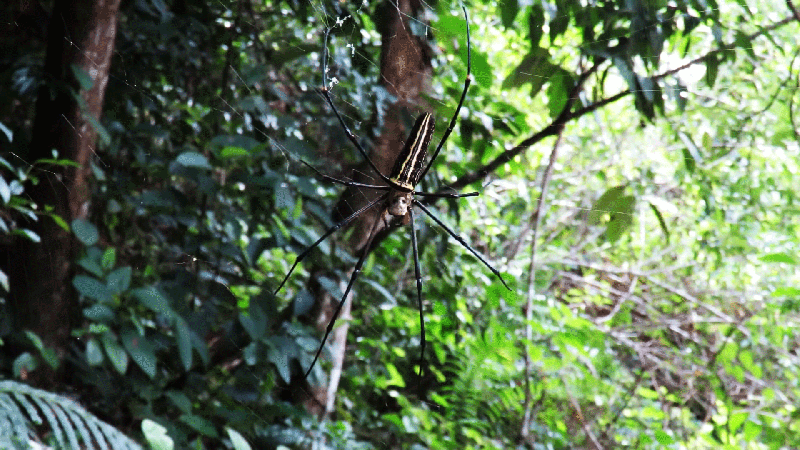
Importance of Sinharaja rainforest
Being a primary tropical forest Sinharaja is considered one of the oldest primary forests in the world. Millions of years old forests show the typical characteristics of evergreen rain forests trees and bushes in four different heights, thick jungle, very high annual rainfall and very high humidity.
Sinharaja rainforest is located in South-West Sri Lanka and is 3 hour tour from Colombo. Sinharaja has the highest bio-diversity among all the forests in Sri Lanka. More than 60% of the fauna and flora of the Sinharaja rainforest are endemic to the island. Sinharaja is home to more than 50% of endemic butterflies and mammals on the island. Many species of reptiles, insects, and amphibians can also be observed in the reserve. Sinharaja Forest Reserve is the last remaining primaeval rain forest in Sri Lanka. Sinharaja is declared a World Heritage site and Biosphere Reserve by UNESCO owing to its importance as Bio-diversity hot spot in the world.
Streams, elegantly flowing rivers, inspiring waterfalls, many species of monkeys, butterflies and moths, leopards, endemic fauna, shrubs and medicinal herbs are some of them that can be observed under the evergreen canopy. Sinharaja provides all the facilities to have an unforgettable adventure holiday such as rivers, mountains, escapements, tracking paths and plenty of sceneries and sounds.
Extent of Sinharaja
Sinharaja forest reserve is spread over 118425 acres on the island. The historical names of the forest are Sinhalaye Mukalana, and Sinhalaye Raja Vanaya, and the name, which is being used today is Sinharaja. The number of endemic fauna species found within the reserve is 217, which is nearly ¼ of the total endemic fauna species in the country.
Sinharaja is very important for bird enthusiasts
Many endemic and rare bird species such as Green-billed coucal (Centropus chlororhynchos), wood pigeon (Columba torringtoni), Sri Lanka blue magpie (Urocissa ornata), Ceylon white-headed starling (Sturnia albofrontata ), Green-billed coucal(Centropus chlororhynchos ), red-faced malkoha (Phaenicophaeus pyrrhocephalus) and Ashy-headed Laughing Thrush (Garrulax cinereifrons) are also very common in the reserve.
There are many endemic and endangered Amphibian and reptile species within the Sinharaja forest reserve such as Python. Numbers of endangered fish species are roaming the freshwater resources in the reserve. Freshwater fish species such as smooth-breasted snakehead, comb tail, black ruby barb, red-tail, cherry, five-bar sword and barb goby can be seen very rarely outside the Sinharaja forest reserve.
2. Sri Lanka nature tours: visiting Yala national park
This dry zone wildlife reserve is the most suitable for watching the largest predator (leopard) of Sri Lanka. In fact, Yala block one is the best place to see leopards in the region, due to the large concentration of them within a small geographical area.
Spotting leopards in a pair, parents with cubs and resting on treetops are very common here. Huge open grassland creates brilliant vistas worth photographing. Herds of elephants, Buffaloes, deer and wild boar are roaming in the vast jungle and encounter visitors very often. So keep your camera ready to catch some colourful scenes from untamed wildlife. Yala national park is included in most Sri Lanka nature tours because it is the best place on the island to spot leopards.
3. Visiting Horton Plains on Sri Lanka nature tours
This virgin mountain forest is situated well over 1300 metres above sea level, which is one of the few last remaining cloud forests on the island and part of most Sri Lanka nature tours. This cloud forest can be described as the Eden of the central mountain range.
This is the highest elevated forest in the country. The fauna and flora of Horton Plains are very unique and cannot be discovered, anywhere else within the borders of Sri Lanka. The reserve is dominated by a lush verdant rocky outcrop and thickly grown grassland. Herds of grazing samba in the plains are making very beautiful sceneries that are worth your attention. Read more on Horton plain national park.
4. Sri Lanka nature tours: visiting Unawatuna beach
This is heaven for beach holiday lovers in Sri Lanka and is included in most Sri Lanka trips such as 4 days tours and 7 days Sri Lanka trips. Unawatuna beach is one of the very few places in the southern coastal belt, where it is safe to have a bath in the sea from January to December. The protective natural coral reef creates protection against the underwater current that prevails during the monsoon. So head on to Unawatuna, if you wish to have a sea bath.
The underwater world of Unawatuna is very rich and attracts a large number of divers. There are many shipwrecks within easy reach of Unawatuna. Coral reefs, exotic fish species, animals such as whales, dolphins and turtles and sea plants are the other major attractions in the waters of Unawatuna. Find out more information on this fascinating beach resort of Unawatuna
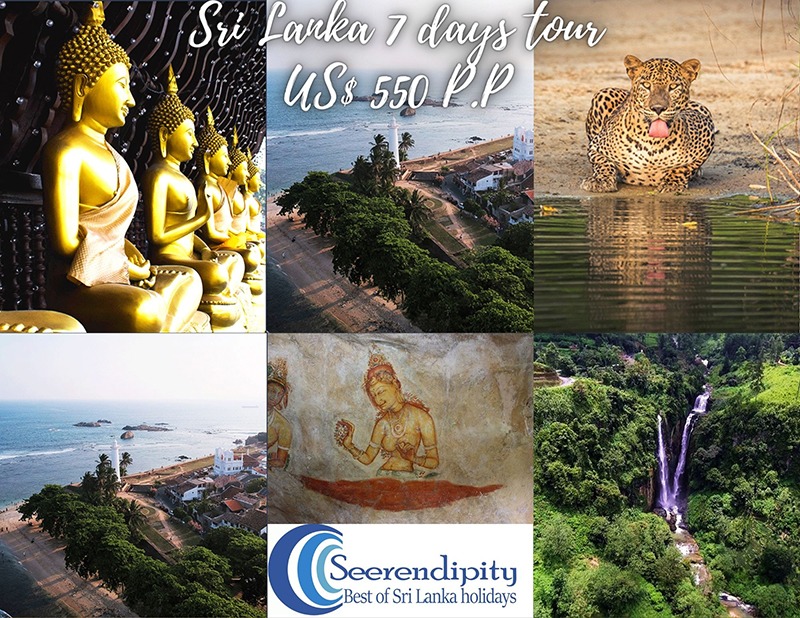
5. Madu River estuary for Sri Lanka nature tours
Madu Ganga is a wetland with international recognition and is explored by a large number of travellers and is part of most Sri Lanka nature tours. It was awarded the status of “RAMSAR WETLAND” due to its importance to the world. This gorgeous revering environment is dominated by giant mangrove forests and their inhabitants.
The boat tour through the network of islands, marshes and rivers enables you to live with true nature, at least for a few hours. See the indigenous people live in harmony with nature. Madu Ganga river safari is one of the most exciting events to take part, in during your Sri Lanka road trip. It gives you a good insight into the rich diversity of the island’s Fauna and Flora.
6. Sri Lanka nature tours: visiting the lush forest in Neluwa
Neluwa is a greenish countryside off the beaten track in west Sri Lanka. There are many beautiful waterfalls and patches of forests around Neluwa. Kalawariya is one of the most popular pilgrimage sites among the Catholic community on the island. Hundreds of thousands of Catholics come to the church every year. The church is picturesquely situated bordering Gin Ganga and it is located about 900 meters above sea level.
7. Sri Lanka nature tours: visiting the Kanneliya rainforest
There are 2 natural jewels around Neluwa, the Kanneliya forest reserve and the Dellawa forest reserve. Both are located within the wet zone of Sri Lanka and are categorized under rainforests. Kanneliya had been a part of Sinharaja forest earlier. But, due to human activities, later Kanneliya was separated from Sinharaja.
Today, Kanneliya is identified as a separate patch of forest with 10,105 hectares of extent. Being a rainforest, it has one of the highest rainfalls on the island measuring between 3750 to 4500 mm. Kanneliya is a valuable catchment area in western Sri Lanka. Kanneliya was declared a protected area in 1934.
8. Sri Lanka nature tours: visiting Dellawa forest
Dellawa forest reserve is another valuable patch of forest, which functions as a guardian of Sinharaja by covering the outer edge of the forest in one direction. However, Dellawa is not a popular forest in Sri Lanka and is not included in most Sri Lanka nature tours. Dellawa forest is covered with thick mist for the time of the day and it is categorized under the mountain forests. It harbours many species of trees, plants and animals that are endemic to the country.
9. Sri Lanka nature tours: visiting Nuwara Eliya
Exploring waterfalls is an integral part of Sri Lanka nature tours, Neluwa is one of the best places to explore many beautiful waterfalls on the west coast. Neluwa is one of the most scenic places in the country with a healing climate similar to Nuwara Eliya.
It has a very moderate temperature compared to most places on the west coast. and also, Neluwa and the surrounding area record a very high rainfall due to the large number of forests such as Hiyare, Kanneliya and Sinharaja. These rivers and streams have many waterfalls numbering nearly a dozen.
The best-known waterfall is ‘Brahmana Ella’, which is 17 meters high. The waterfall is located in the village called Lankagama and the road which leads to the waterfall is very rugged and a vehicle with plenty of ground clearance is very important. Some other noteworthy waterfalls are Ellewalw Ella, Elibodadola Ella, Duwili Ella, Gal Oruwa Ella, Nelugolla Ella, Anagi Mal Ella, Manamal Ella and Tabalagama Ella.
10. Sri Lanka nature tours: visiting Nilagala Forest Reserve
Nilagala forest reserve is situated in the Uva province of Sri Lanka and is another unpopular yet important patch of forest which show-up up rarely on Sri Lanka nature tours. This valuable forest reserve with high biodiversity is under the purview of the forest conservation department. Nilagala forest reserve is located bordering the Galoya national park in the district of Monaragala.
The location of Nilagala forest
Nilagala forest reserve spreads over Karadugama Grama Seva division in the Boella region. According to the information, 400 families from Maldambe, Pitakumbura, Bulupitiya, Serava and Peran will be resettled in several parts of the Nilagala forest reserve.
Boella tank will be restored and will be used as the main source of water in the new settlement. It is another step of the program initiated by the government to distribute one million plots of land among the people. The forest area owned by the government had been handed over to the divisional secretariat of Bibila to distribute the plot of land among the people.
The proposed resettlement area is located between the Galoya National park and Nilagala forests reserve. Therefore the proposed new settlement area is inhabited by a large number of wild elephants and other wild animals. Naturalists opine that the people who are resettled in the area will have to face many hardships due to the wild elephants. Naturalists believe resettling people in the Nilagala forest reserve could be aggravating the human-elephant conflict in Sri Lanka.
The proposed area is mainly comprised of grassland and the vegetation and the environment in Nilgala are unique to the Uva province. Nilagala forest reserve is inhabited by a large number of animal species that are found only in the Uva province such as Ophisops leschenaultii and Ophisops minor. Several species of frogs that are confined to these areas are Painted Partridge, Yellow-legged Green Pigeon and Scally Bellied Woodpecker. One butterfly species known as Barronet is seen very often in the area due to the Kudumberi trees, on which the butterfly larvae fed.
Deforestation is being identified as a serious environmental issue in the region. Even though Sri Lanka still has a considerable amount of green cover within its borders, deforestation has been identified as a major threat to the country’s environment. Prior to British rule in Sri Lanka, the natural forest cover of the country had been wider than today.
A large part of the forest was cleared in the last few centuries, especially during the British rule in the country. At the beginning of British rule, 60% of Sri Lanka was covered by forests. It was hastily removed by the British planters to cultivate economically important crops in the country.
Deforestation still can be seen in many parts of the country due to the expansion of settlement, infrastructure development etc. As per the statistics, forest cover in 2006 stood at 1,933,000 hectares or 29.9% of the total land area and the depletion rate is measured to be around 1.5%.
11. Sri Lanka nature tours: visiting waturana-last remaining swamp forest
Rainforest, dry-zone forest, mountain forest, savannah, and mangroves are very common terms in the vocabulary of the naturalist, who explores the natural vegetation of Sri Lanka. But swamp forest is a term that is heard very rarely in the country.
Sri Lanka is bestowed with a large amount of forested area and Sri Lanka is among the countries with the highest Bio-diversities in the world. But, ironically there is only one swamp forest in the country. This swamp forest is a plot of land located in Bulathsinhala, in the district of Ratnapura. The swamp forest is called Waturana and it is a part of the plantation called Waluwatta. By ascertaining the importance of the Waturana swamp forest, it was declared a protected area under the environmental act in 2009.
Waturana swamp forest is a rare type of natural attraction in the Grama Seva division of Damparagoda near the Pahiyangala historical cave. The swamp forest occupies over six hectares of the land surface in the Walauwatta plantation. One distinct characteristic of Waturana is the thick canopy formed by the trees at the height of 10-15 meters above the surface. The canopy blocks the sunlight from falling onto the ground. Therefore the gloomy atmosphere prevails in the forest even on a day with a very clear sky.
Waturana swamp forest is located in the valley of Kuda Ganga. The main sources of water for the Waturana swamp forest are two rivers. The most significant contributor is the tributary of Kalu Ganga or Kalu River known as Batapota Ela. Kukulu Ela is also a significant contributor to water for the swamp area. Kekulu ela mingles with Batapota Ela in the swamp forest.
The forest area is under the water most of the year. Deposits of parts of trees and animal fossils remain intact in the swap for a long period of time and create a very sensitive unique ecological environment. Waturana has been able to get the attention of the international community due to this unique environment.
Most of the trees of the forest are endemic to the island. For instance, Suwada tree (Mesua stylosa) is endemic to the island, moreover, it can only be found in Waturana. Suwada tree grows up to 8-10 meters from the ground and its crown is made of thin, long leaves.
Another noteworthy tree is the Horawel (stemnopours mooni), which is also endemic to the island and available only in Waturana. All the previous efforts to distribute this valuable tree on the island proved to be useless so far. Naturalists believe that the tree is highly adapted to the unique atmosphere of the swamp forest and cannot survive in any other environment. The tree was first discovered in the 1800s and thereafter it was not reported in any part of the world. The naturalists speculated that it is extinct till it was re-discovered in the 1970s.
Most of the trees here are highly adapted to survive in the soil with excessive water. The trees have developed roots similar to mangroves enabling them to take the fresh air from the atmosphere. Waturana harbours a large number of endemic trees including Atiudayana (crypro coryne spp), Leen theri (Arecca cocinna) and Katu Bodu (cullenia ceylonica).
A large number of fauna species is also an important contributor to the rich Bio-diversity of the Waturana swamp forest. Wild boar (sus scrofa cristatus), slender lorries (Loris Tardigradys), and Leaf monkey (Trachypuhecus vetules) are some most occurring animal species in the forest.
Waturana is inhabited by a large number of amphibians as well as six species of reptile species. Swamp forest attracts a large number of bird species including several endemic birds. Earlier a large number of freshwater fish species was recorded in waturana but the number of fish species is sharply reduced over the last several decades. Water pollution is considered to be the main reason for the reducing number of fish species here.
Excessive use of chemicals in agriculture is the main reason for water pollution in Waturana. Illegal timber harvesting, hunting, removing trees for fuel, and water pollution are leading threats to the survival of the fauna and flora of this valuable swamp forest.
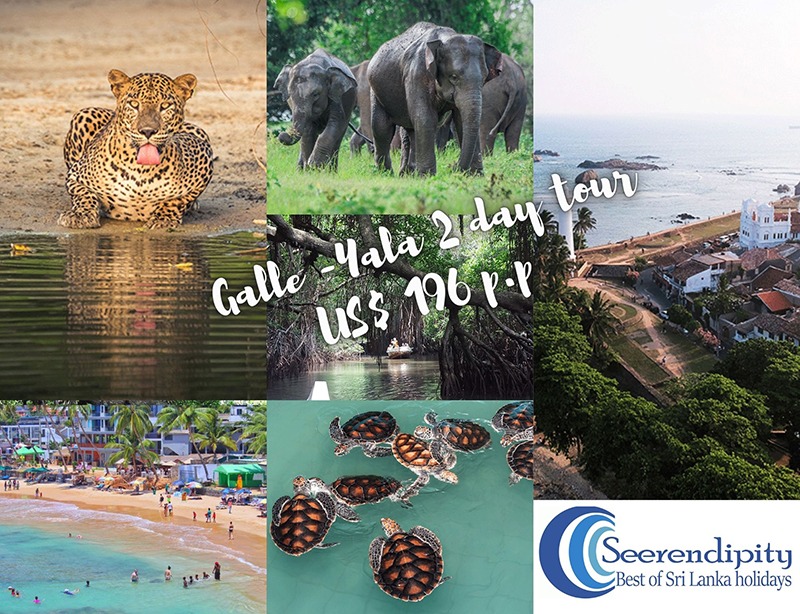
12. Sri Lanka nature tours: visiting Kottawa forest
Kottawa rainforest is located in the Yakkalamulla Divisional Secretariat Division. Kottawa Forest is located close to the town of Galle in Southern Province. The rainforest covers an area of 435 hectares. It is a beautiful wet zone evergreen rainforest that can be found when travelling 13 miles on Galle-Udugama road.
It is one of the most popular patches of forest in southern Sri Lanka. However, it is not popular for Sri Lanka jungle tours like Yala and Sinharaja rainforests. However, it is worth visiting the forest if time permits you to do it. There is a 10-hectare natural forest garden reserved for educational and research purposes.
The forest department also maintains an information centre to educate visitors on the Kottawa forest and forestry. The visitors need to purchase a ticket on entering the forest and the information centre. A nursery is also being maintained at the site and distributing valuable trees and plants. Naga Aranya and Maluwegoda Aranya Senasana are 2 Buddhist hermitages that are located within the forest.
Dunukaiya Dola, Haldola and Udumalulla are 3 streams that flow through the forest and end at the Thundola. The coconut tributary acts as the catchment area of the Modara River.
The water ponds maintained by the Yakkalamulla Pradeshiya Sabha located in the forest also serve the residents and tourists of the area. These ponds can be used as swimming pools and they already attract a large number of local travellers.

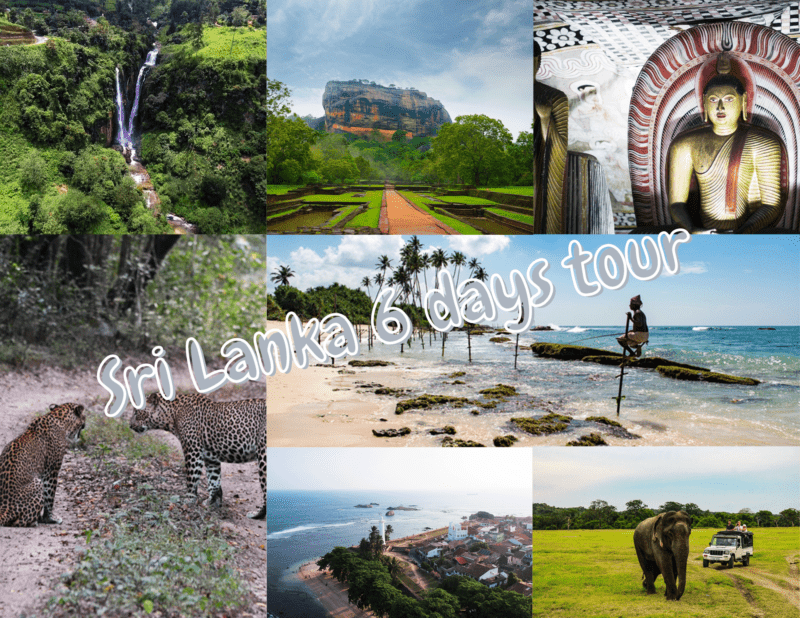
Very nice article on Sri Lanka nature tours